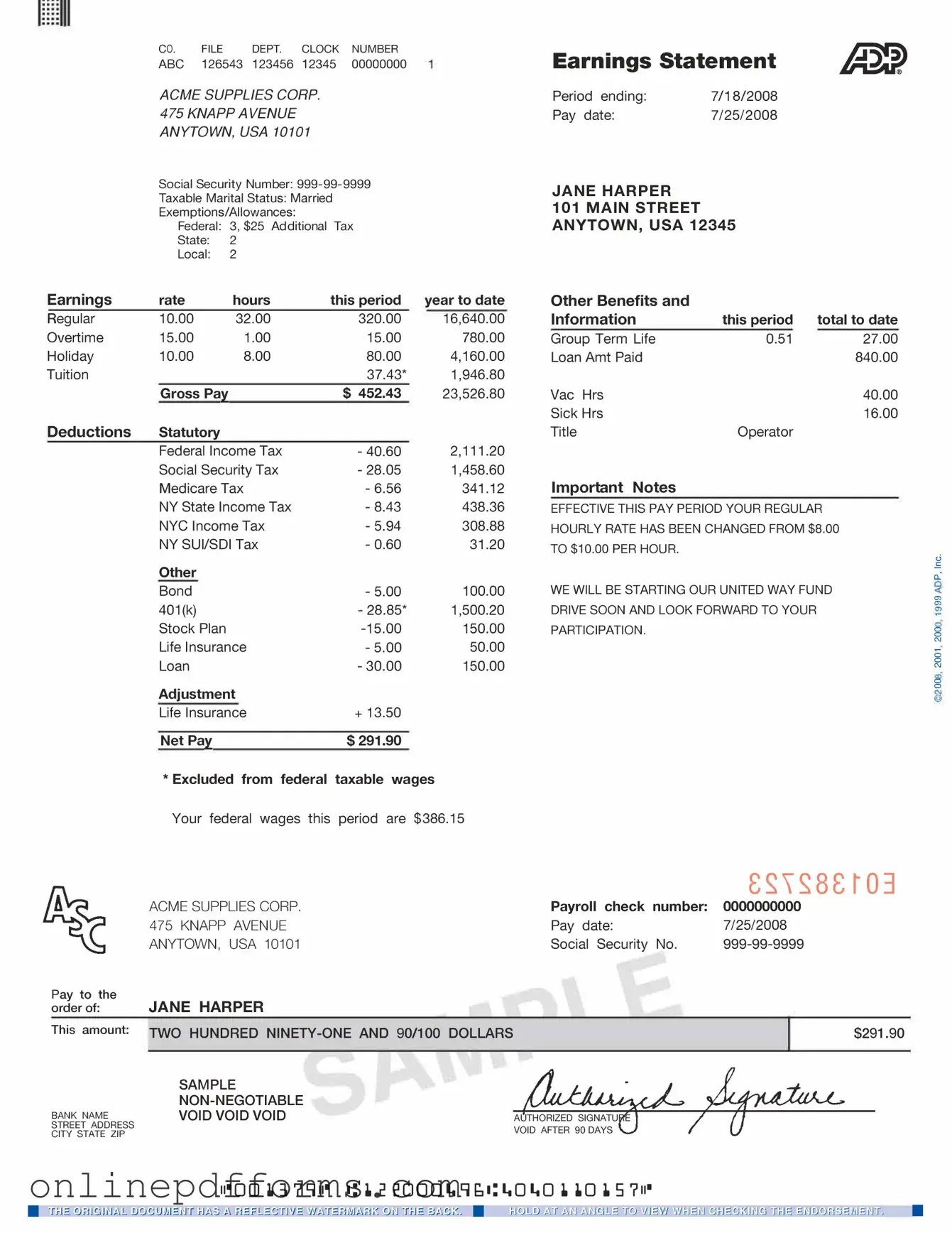The W-2 form is a key document that employees receive from their employers. It summarizes an employee's annual earnings and the taxes withheld from their paycheck. Similar to the ADP Pay Stub, the W-2 provides a breakdown of income, but it focuses on the entire year rather than individual pay periods. Both documents are essential for understanding compensation and preparing for tax filing, making them critical for financial planning.
The pay statement, often issued by employers, serves a similar purpose to the ADP Pay Stub. It details an employee's earnings for a specific pay period, including gross pay, deductions, and net pay. While the ADP Pay Stub is a specific format used by ADP, a pay statement can vary in design and terminology. Both documents help employees track their earnings and understand their take-home pay.
The 1099 form is used for reporting income received by independent contractors and freelancers. Like the ADP Pay Stub, it provides a summary of earnings but focuses on payments made outside of traditional employment. Both documents are crucial for tax reporting, as they help individuals understand their income and the taxes owed. They serve different types of workers but share the goal of providing clarity on earnings.
The direct deposit receipt is another document that shares similarities with the ADP Pay Stub. This receipt provides confirmation of the funds deposited into an employee's bank account after a pay period. While it may not detail deductions like the ADP Pay Stub, it confirms the net pay received. Both documents are important for tracking payments and ensuring that employees receive their correct compensation.
The payroll summary report, often generated by employers, offers a broader view of payroll expenses for a specific period. It includes total wages paid, deductions, and employer contributions. While the ADP Pay Stub focuses on individual employee earnings, the payroll summary report aggregates this information for the entire workforce. Both documents are valuable for financial oversight and budgeting within a business.
